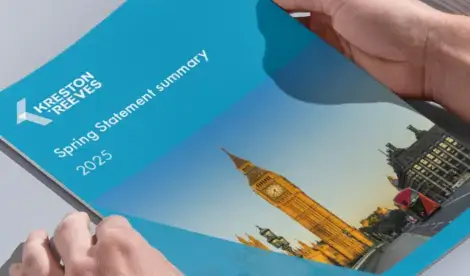Dipesh Galaiya BSc (Hons) FCA
- Private Client Tax Senior Manager
- +44 (0)330 124 1399
- Email Dipesh
Suggested:Result oneResult 2Result 3
Sorry, there are no results for this search.
Sorry, there are no results for this search.
View all peoplePublished by Dipesh Galaiya on 12 January 2022
Share this article
Today, it is widely accepted that England is facing a housing crisis. Homelessness is rising, private rents are unaffordable for many, and countless people are priced out of buying a home. As a result, social housing has grown in importance over the years as an answer to these problems.
Social housing dates back to medieval times when Almshouses and charitable housing providers (linked first to religious orders and later to altruistic benefactors) provided shelter to the elderly, the infirm and those less well off.
Since early 2020, the pandemic has presented various issues for housing associations, some of which have been identified below.
Social housing parent entities may well have wholly-owned subsidiaries who report a profit and therefore incur a corporation tax liability. To mitigate the corporation tax charge, such subsidiaries would have to donate away their taxable profits to their charitable parent within nine months of the end of a given accounting period. These donations must be made in cash from available distributable reserves at the point of making the donations (rather than the balance sheet date). Therefore, if the taxable subsidiary has gone into a negative reserves position (due to poor trading conditions) at the point of making the donation for the preceding accounting period, then it may not be permitted to make that donation. Thereby resulting in a corporation tax charge.
If there are entities within a social housing group that have losses and where such losses are surrendered for group relief without payment, a mismatch can occur between accounting and tax losses which can have an impact on the qualifying charitable donations for future accounting periods.
Some housing associations may have properties that were for sale but due to the slowing down in the housing market, they may consider it beneficial to hold these properties for rental income to enhance their cashflow position. Such appropriation of property to/from stock can trigger a corporation tax issue.
It is possible, in certain circumstances for housing associations to afford special Stamp Duty Land Tax reliefs or exemptions when acquiring properties, whether from third parties or related businesses. The rules however are very specific to the circumstances and therefore it is important to review these to ensure the correct amount of tax is paid.
VAT is often a cost for housing associations as the rental of property is exempt from VAT which does not allow VAT recovery. Most housing associations have a poor VAT recovery position.
There are mechanisms in place such as the use of subsidiary companies to mitigate VAT on costs which are widely utilised by the larger housing association groups. Whilst these are generally accepted by HMRC as vanilla schemes, they must be set up and operated correctly. A badly implemented VAT saving structure will be challenged by HMRC and expose the housing association to risk. For those who have such structures, they should be reviewed regularly to ensure they are still fit for purpose and operating correctly. These structures can be beneficial but there is a cost to setting them up which cannot be overlooked for smaller associations, although there are consortiums that act for a number of associations that might be able to assist.
Not all housing associations are registered for VAT but even those that are, VAT on costs deserves significant focus.
VAT on land is one of the single biggest costs a developing housing association may incur. The ability to charge VAT on land was introduced in 1989 with the option to tax and we are seeing more land subject to VAT as time goes on. There is an ability for a housing association to disapply an option to tax so that VAT is not charged. Depending on circumstances, this does not always work for the vendor and there are other costs potentially leading to a higher overall cost for one or both parties- which defeats the object.
There are mechanisms that may allow mitigation of some or all of the VAT in these circumstances but again, implementation of any scheme to remove a VAT cost must be undertaken with caution as the numbers are large and the risk of challenge high.
In all cases, professional advice should be sought.
For more information about the topics explored in this article, contact us here.
Share this article
This site is protected by reCAPTCHA and the Google Privacy Policy and Terms of Service apply.
Related people
This site is protected by reCAPTCHA and the Google Privacy Policy and Terms of Service apply.
Our complimentary newsletters and event invitations are designed to provide you with regular updates, insight and guidance.
You can unsubscribe from our email communications at any time by emailing [email protected] or by clicking the 'unsubscribe' link found on all our email newsletters and event invitations.
This site is protected by reCAPTCHA and the Google Privacy Policy and Terms of Service apply.





